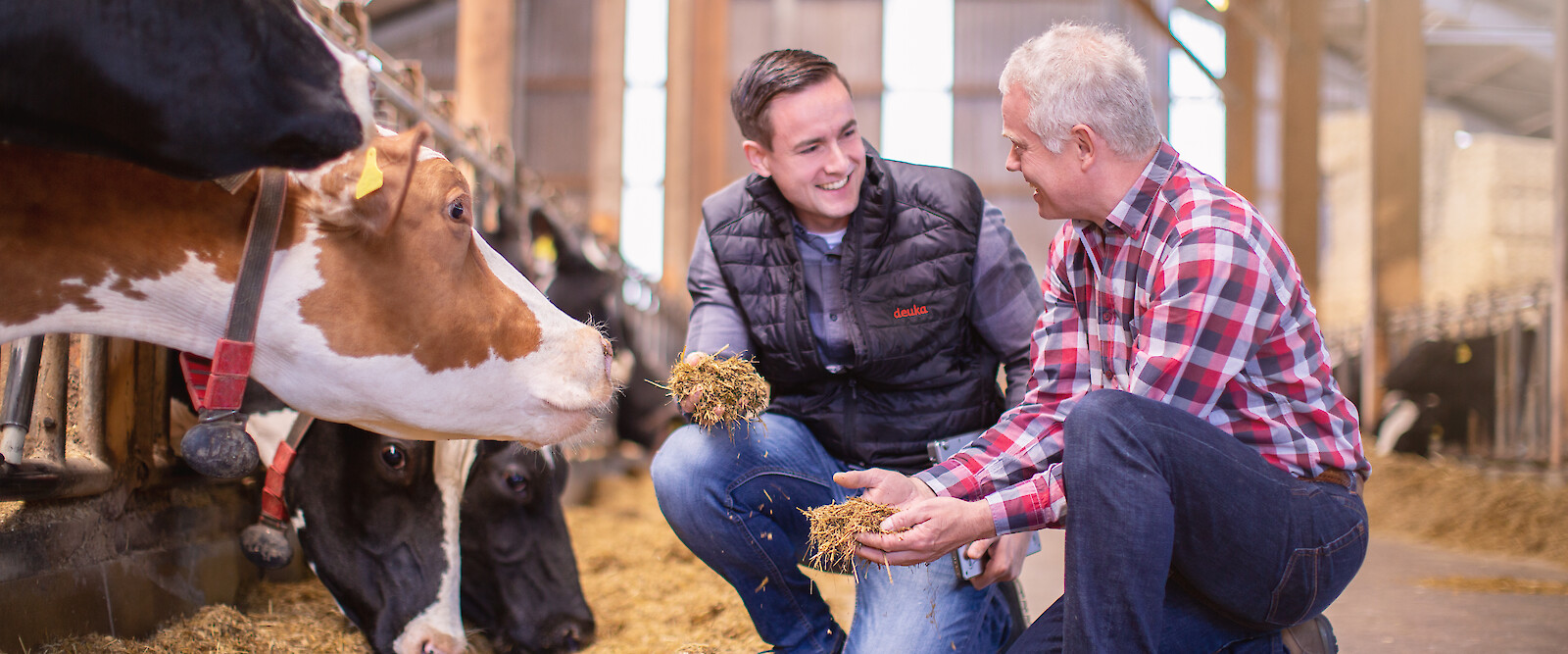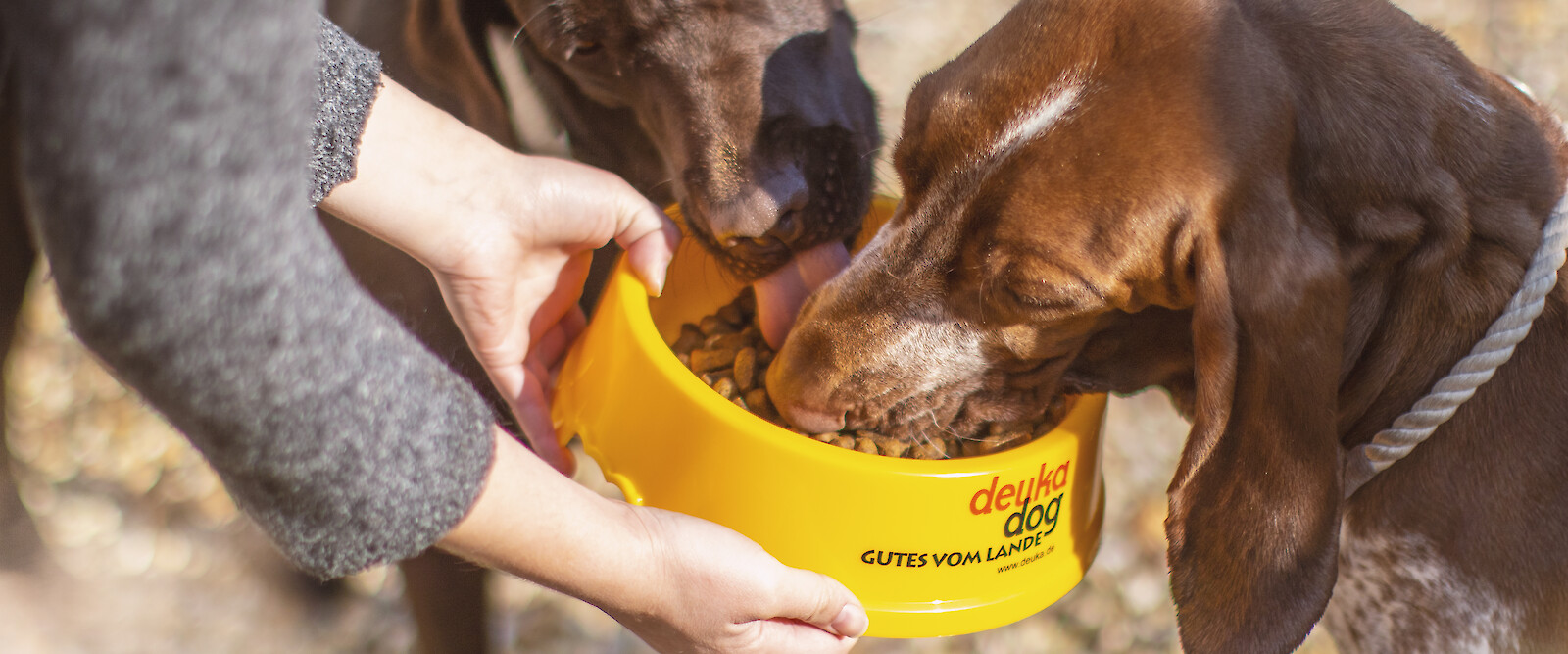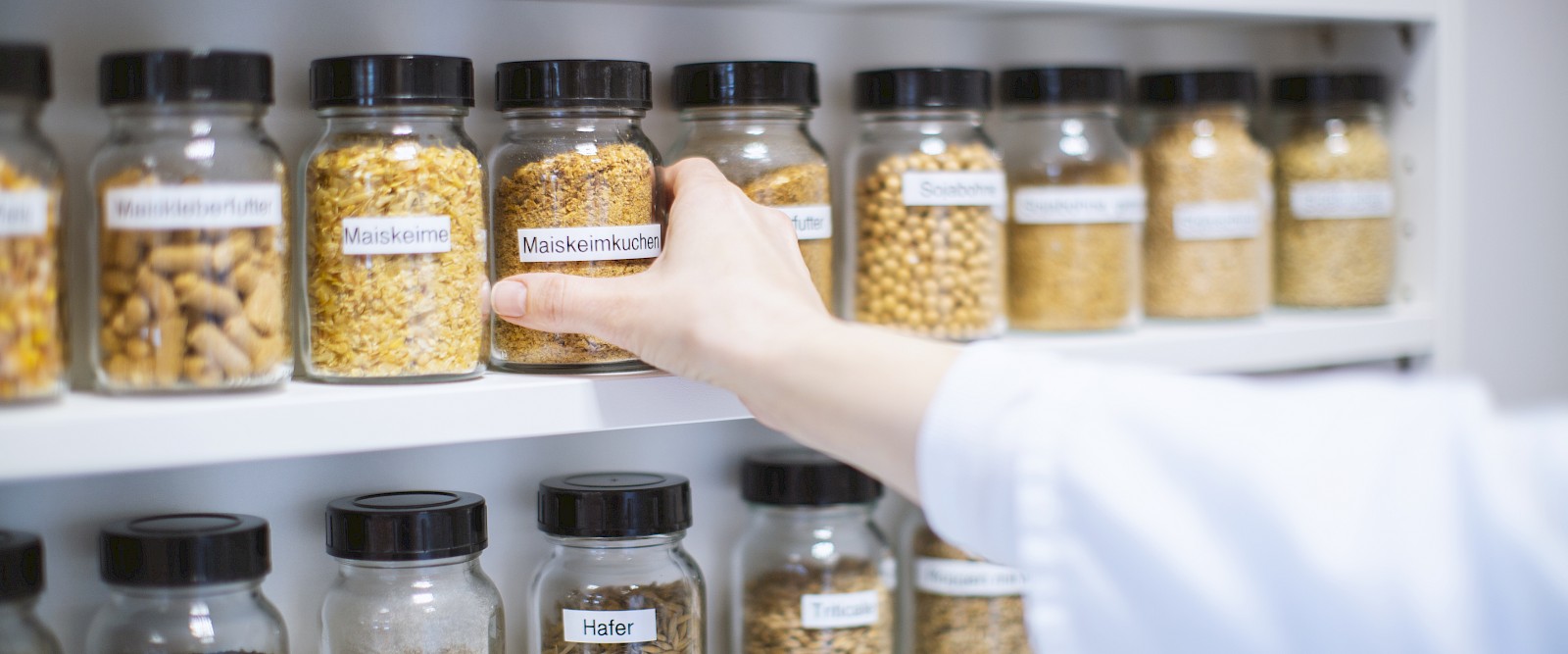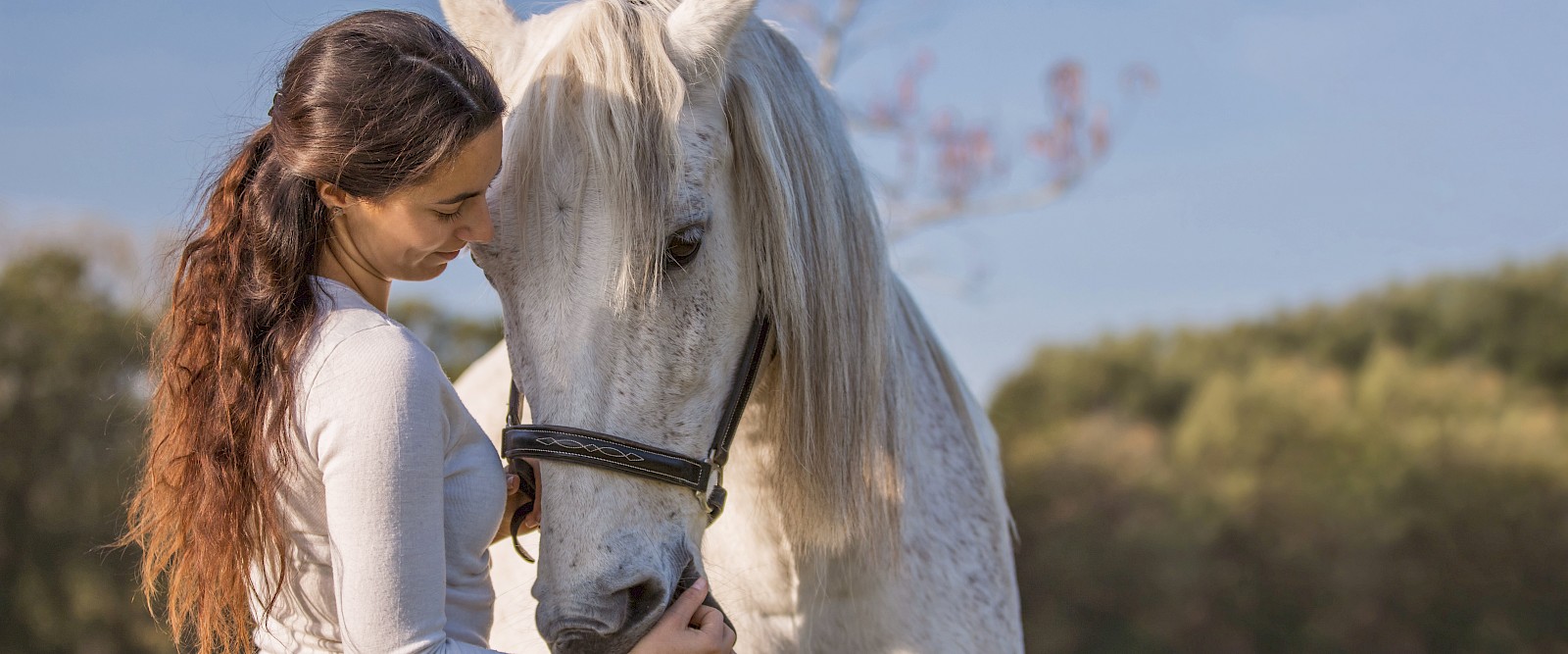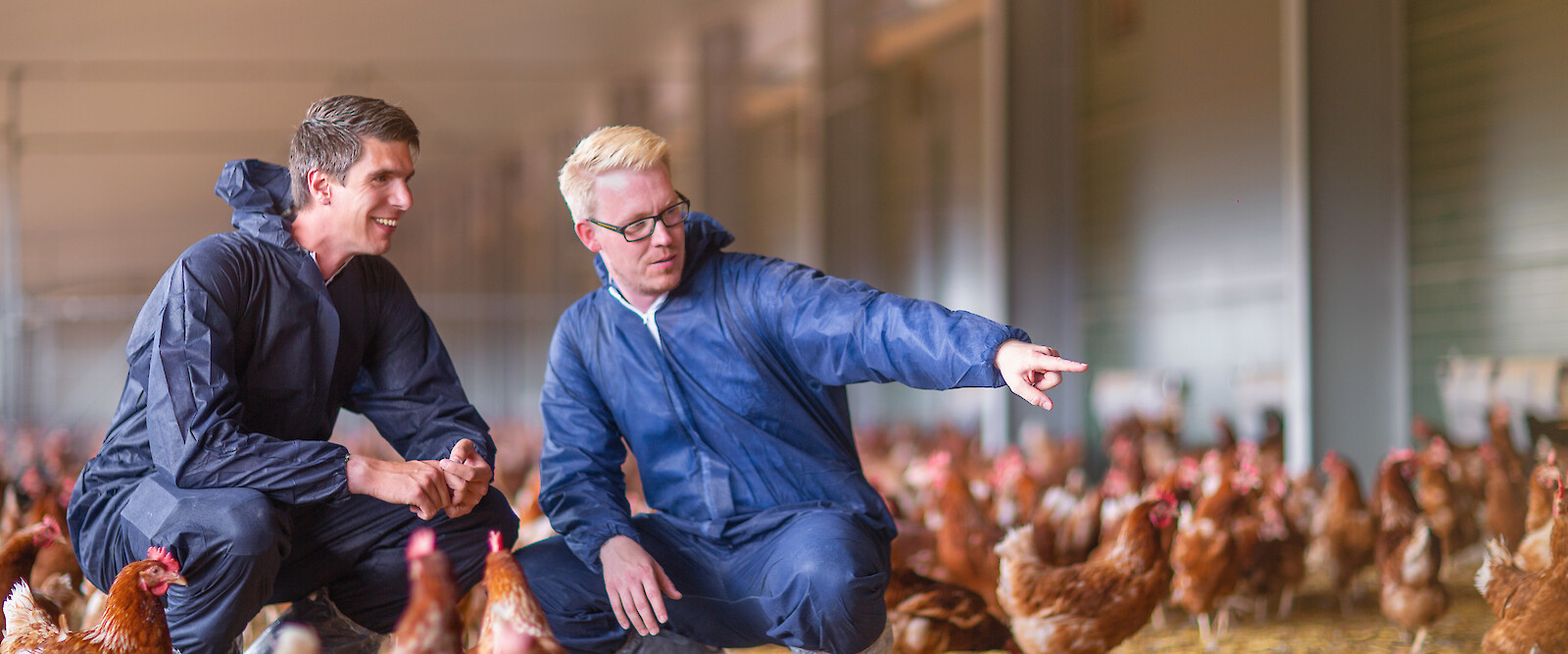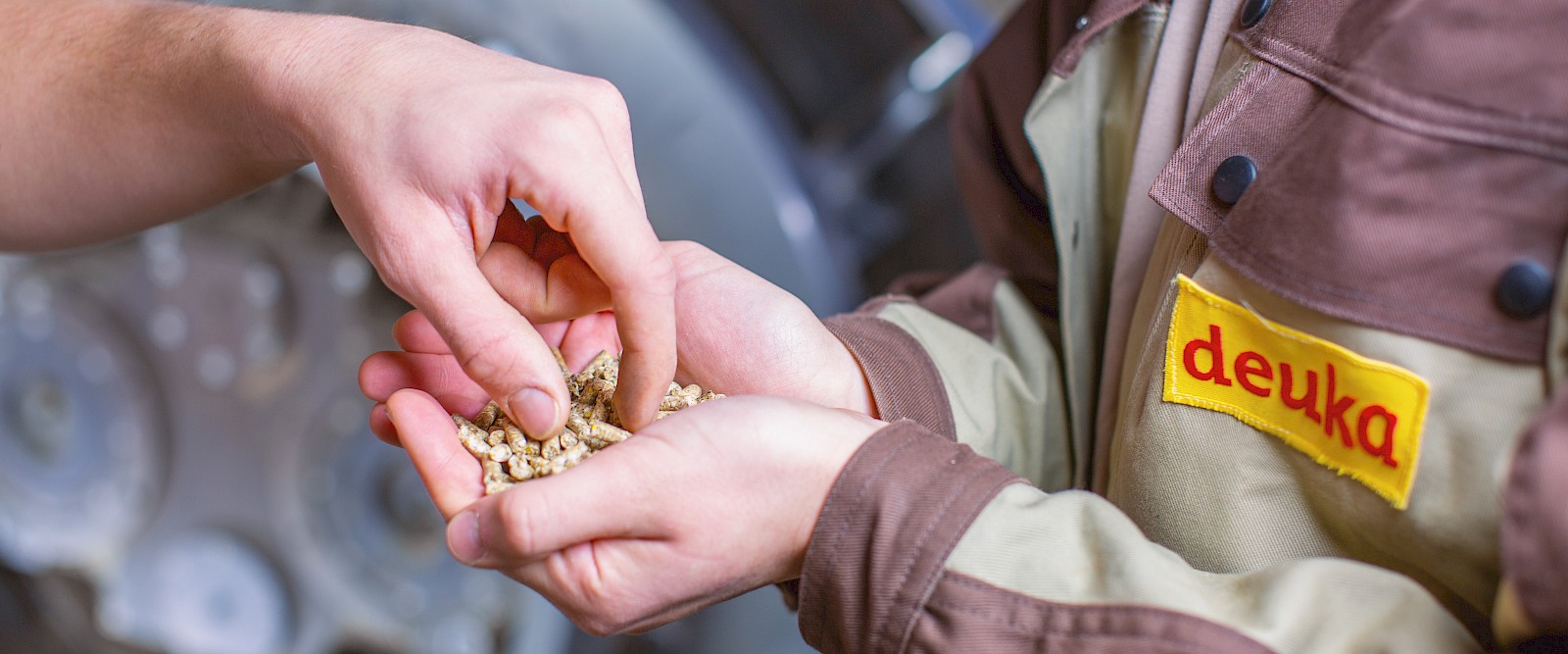Raw material and nutrient lexicon
Weitere Einträge
Zinc
Zinc has a versatile significance for cell metabolism and is contained in a large number of the body's own active substances (hormones and ferments). Zinc also has a special protective function for the skin. There is an antagonistic interaction between zinc and, for example, calcium or the plant phytin, which in individual cases can lead to impaired zinc absorption (uptake) and cause a zinc deficiency. Zinc also interacts with copper. Higher copper doses reduce zinc storage in the body. Typical signs of zinc deficiency are growth retardation, skin and claw damage, hair loss or parakeratosis. A decrease in milk yield and fertility problems are also observed. Many roughages, juices and cereals contain little zinc (20-40 mg/kg dry matter). Oil meals, on the other hand, are richer in zinc. Zinc is supplied to the animals as needed by supplementing the feed with zinc in the form of sulphate, carbonate, oxide or acetate.
